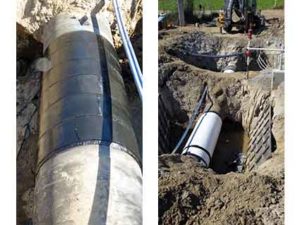Corrosion: The Hidden Factor Behind Wyoming’s Oil Spill In May, an oil spill occurred in Wyoming, and corrosion was found to be the primary culprit. The incident began when a backhoe accidentally struck a 6-inch underground pipeline, creating a small nick that went unnoticed initially. Over time, this minor damage led to the pipeline's eventual rupture, spilling 25,000 gallons of crude oil into the Powder River Basin. The spilled oil traveled over two miles before being contained by a temporary dam constructed upstream of the Powder River to prevent further contamination. Cleanup Efforts and Lessons Learned According to Bob Dundas, the environmental coordinator at the Bureau of Land Management (BLM), cleanup operations were carried out effectively. At first, vacuum trucks were considered to remove the spilled oil. However, due to logistical challenges and efficiency concerns, the decision was made to burn off the oil instead. This approach proved to be both practical and effective, minimizing environmental impact while addressing the spill quickly. Luckily, the spill occurred on federal and state lands, avoiding any harm to private property. While some petroleum residue lingered in the soil for several weeks following the incident, groundwater contamination was thankfully avoided. Despite this, the spill serves as a stark reminder that such accidents can often be prevented with proper maintenance and timely intervention. Innovative Solutions for Pipeline Repairs Traditional repair methods, such as steel welding or complete pipeline replacement, can be expensive and time-consuming. Fortunately, advanced solutions like HJ3's CarbonSeal™ carbon fiber repair systems offer a modern alternative. These systems, approved by the American Society of Mechanical Engineers (ASME), utilize carbon fiber composites that are ten times stronger than fiberglass. This means less material is required, reducing costs and installation time significantly. Since 2008, these systems have successfully repaired thousands of feet of pipelines, saving owners up to 90% in repair expenses compared to full replacements. Preventing Future Incidents Although pipeline ruptures are avoidable, awareness about carbon fiber repair options remains low among oil refineries and operators. Regular inspections are vital for identifying potential issues early on, allowing for prompt repairs before corrosion sets in. Implementing a proactive inspection schedule not only prevents spills but also ensures compliance with safety regulations. Looking Ahead As we continue to rely on pipelines to transport energy resources across vast distances, investing in innovative technologies like carbon fiber repairs becomes increasingly important. By embracing these advancements, we can reduce the likelihood of future spills while protecting our environment and communities. This recent spill in Wyoming highlights the urgent need for improved pipeline maintenance practices. With the right tools and knowledge, we can ensure safer and more sustainable operations moving forward. Hose Assembly,Sae Hydraulic Hose Assembly,Integrated Hydraulic Assembly Joint,Hydraulic Flange Couplings JiangSu Speeder heavy machinery Co., LTD , https://www.speederjoint.com